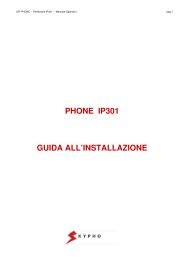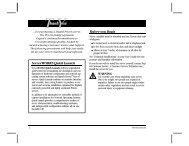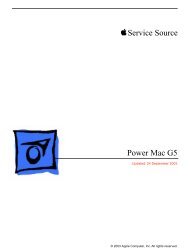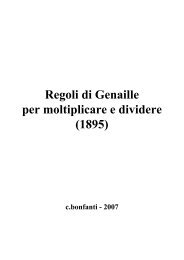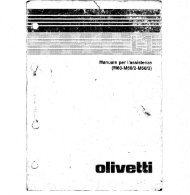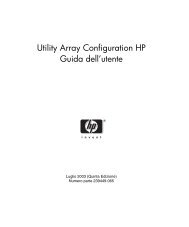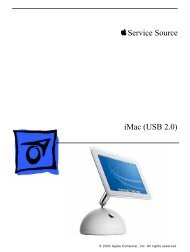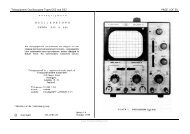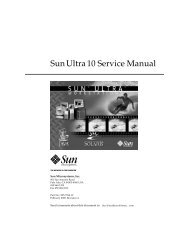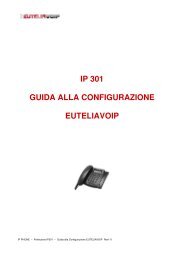HPJournal1989Jun_798.. - Dynamic Softer for Background-Images
HPJournal1989Jun_798.. - Dynamic Softer for Background-Images
HPJournal1989Jun_798.. - Dynamic Softer for Background-Images
You also want an ePaper? Increase the reach of your titles
YUMPU automatically turns print PDFs into web optimized ePapers that Google loves.
very low. As a result, each of the blocks runs independently<br />
of the other two. This results in maximum chip per<strong>for</strong>-<br />
Inance.<br />
The MPI section provides facilities <strong>for</strong> controlling and<br />
observing the chip. It contains six control registers, eight<br />
status registers, two 20-bit input and output byte counters,<br />
and a programmable automatic dictionary reset circuit. The<br />
control and status registers are accessed through a generalpurpose<br />
8-bit microprocessor interface bus. The control<br />
registers are used to enable and disable various chip features<br />
and to place the chip into different operating modes<br />
(compression, decompression, passthrough, or monitor).<br />
The status registers access the 20-bit counters and various<br />
status flags within the chip.<br />
During the development of the HP-DC algorithm, it was<br />
found that compression ratios could be improved by resetting<br />
the dictionary fairly frequently. This is especially true<br />
if the data stream being compressed contains very few similar<br />
byte strings. Frequent dictionary resets provide two<br />
important advantages. First, resetting the dictionary <strong>for</strong>ces<br />
the codeword length to return to 9 bits. Second, new dictionary<br />
entries can be made that reflect the present stream<br />
of data (a <strong>for</strong>m of adaption). The HP-DC chip's interface<br />
section contains circuitry that dynamically monitors the<br />
compression ratio and automatically resets the dictionary<br />
when appropriate. By writing to an interface control register,<br />
this circuitry can be programmed to reset automatically<br />
at a wide range of compression ratio thresholds. Another,<br />
faster, reset point when the data is expanding guarantees<br />
a better worst-case compression ratio, which in turn provides<br />
a level of expansion protection. Most data compression<br />
algorithms will expand their output if there is little<br />
or no redundancy in the data.<br />
The IOC section manages the process of converting between<br />
a byte stream and a stream of variable-length<br />
codewords (ranging from I bits to 12 bits). Two of the eight<br />
reserved codewords are used exclusively by the IOC. One<br />
of these codewords is used to tell the IOC that the Iength<br />
of the codewords must be incremented by one. With this<br />
function controlled by a codeword in the data stream, the<br />
process of incrementing codeword size is decoupled from<br />
the CDC section. The IOC operates as an independent<br />
pipeline process, thus allowing the CDC to per<strong>for</strong>m compression<br />
or decompression without being slowed down by<br />
the IOC. Another benefit of using a reserved codeword to<br />
increment the codeword size is that any future HP-DC engines<br />
that have larger codeword sizes will be backward<br />
compatible with this HP-DC engine.<br />
The second reserved codeword alerts the IOC that the<br />
next codeword is the last one associated with the current<br />
packet of data. From this in<strong>for</strong>mation, the IOC knows to<br />
finish its packing routine and end on a byte boundary. This<br />
feature allows compression of multiple input packets into<br />
one contiguous output packet while maintaining the ability<br />
to decompress this packet into its constituent packets. The<br />
IOC is also capable of allowing data to pass straight through<br />
from input to output without altering it, and of allowing<br />
data to pass through while monitoring the potential compression<br />
ratio of the data. These features can be used as<br />
another level of expansion protection.<br />
The CDC section is the engine that per<strong>for</strong>ms the trans<strong>for</strong>-<br />
mation from uncompressed data to compressed data and<br />
vice versa. This section is composed of control, data path,<br />
and memory elements that are finely tuned <strong>for</strong> maximum<br />
data throughput. The CDC interfaces with the IOC via two<br />
12-bit buses. During compression, the IOC passes the input<br />
bytes to the CDC section, where they are trans<strong>for</strong>med into<br />
codewords. These codewords are sent to the IOC where<br />
they are packed into bytes and sent out of the chip. Conversely,<br />
during decompression the IOC converts the input<br />
byte stream into a stream of codewords, then passes these<br />
codewords to the CDC section, where they are trans<strong>for</strong>med<br />
into a stream of bytes and sent to the IOC. The CDC section<br />
also interfaces directly to the external RAM that is used to<br />
store the dictionary entries.<br />
The CDC makes use of two reserved codewords. The first<br />
is used any time a dictionary reset has taken place. The<br />
occurrence of this codeword causes two actions: the IOC<br />
returns to the state in which it packs or unpacks g-bit<br />
codewords, and the CDC resets the current dictionary and<br />
starts to build a new one. Dictionary resets are requested<br />
by the MPI section via microprocessor control or the automatic<br />
reset circuitry. The second reserved codeword is generated<br />
during cornpression any time the CDC runs out of<br />
usable external RAM while trying to build a new dictionary<br />
entry. This event very rarely happens, given sufficient external<br />
RAM. However, as the amount of memory decreases,<br />
it is more likely that the CDC will encounter too many<br />
dictionary collisions and will not be able to build new<br />
dictionary entries. With the reduction of external memory<br />
and the inevitable increase in dictionary collisions, the<br />
data throughput and compression per<strong>for</strong>mance will be<br />
slightly degraded. The HP-DC chip supports three different<br />
memory configurations, so a subsystem cost-versus-per<strong>for</strong>mance<br />
trade-off can be made with regard to individual<br />
system requirements. This full-dictionary codeword is also<br />
used during decompression by the CDC to ensure that the<br />
Fig.5.<br />
Microprocessor Bus Data In Data Out<br />
External Memory Interface<br />
HP-DC chip block diagram.<br />
30 Hewlerr-pncxeRD JoURNAL JUNE 1989




